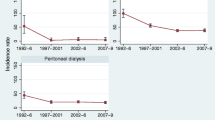Abstract
Among recipients of intra-abdominal solid-organ transplants, bloodstream infections (BSIs) are a major cause of mortality. We undertook a retrospective cohort study of recipients of kidney, pancreas, and/or liver transplants with BSIs at a single center over an 11-year period. Multivariate analysis using logistic regression was used to determine independent predictors of 15-day mortality and clinical cure, with a focus on the use of statins. Three hundred and eleven recipients of solid-organ transplants had 604 episodes of BSI. Forty-four (14%) died within 15 days of BSI. Sixteen percent did not achieve clinical cure. In the multivariate model, each one point increase in the APACHE score was associated with a 1.09-fold increased risk of death (95% confidence interval [CI] 1.00–1.18, P = 0.03). The lack of appropriate antibiotic therapy was associated with a four-fold higher risk of death within 15 days (odds ratio [OR] 4.65, 95% CI 1.46–14.78, P = 0.009). Statin use was protective (OR 0.18, 95% CI 0.04–0.78). Patients with high APACHE scores, nosocomial rather than community source of BSI, lack of appropriate antibiotic therapy, and mental status changes were less likely to achieve clinical cure of their BSIs. In conclusion, appropriate antibiotic therapy and statin use are associated with lower risk of mortality from BSIs in this patient population.
Similar content being viewed by others
References
United Network for Organ Sharing. Home page at: http://www.unos.org.
Dharnidharka VR, Stablein DM, Harmon WE (2004) Post-transplant infections now exceed acute rejection as cause for hospitalization: a report of the NAPRTCS. Am J Transplant 4:384–389. doi:10.1111/j.1600-6143.2004.00350.x
Candel FJ, Grima E, Matesanz M et al (2005) Bacteremia and septic shock after solid-organ transplantation. Transplant Proc 37:4097–4099. doi:10.1016/j.transproceed.2005.09.181
McClean K, Kneteman N, Taylor G (1994) Comparative risk of bloodstream infection in organ transplant recipients. Infect Control Hosp Epidemiol 15:582–584
Moreno A, Cervera C, Gavaldá J et al (2007) Bloodstream infections among transplant recipients: results of a nationwide surveillance in Spain. Am J Transplant 7:2579–2586. doi:10.1111/j.1600-6143.2007.01964.x
Bedini A, Codeluppi M, Cocchi S et al (2007) Gram-positive bloodstream infections in liver transplant recipients: incidence, risk factors, and impact on survival. Transplant Proc 39:1947–1949. doi:10.1016/j.transproceed.2007.05.055
Singh N, Gayowski T, Wagener MM et al (1997) Bloodstream infections in liver transplant recipients receiving tacrolimus. Clin Transplant 11:275–281
Torre-Cisneros J, Herrero C, Cañas E et al (2002) High mortality related with Staphylococcus aureus bacteremia after liver transplantation. Eur J Clin Microbiol Infect Dis 21:385–388. doi:10.1007/s10096-002-0725-1
Safdar N, Maki DG (2006) Use of vancomycin-containing lock or flush solutions for prevention of bloodstream infection associated with central venous access devices: a meta-analysis of prospective, randomized trials. Clin Infect Dis 43:474–484. doi:10.1086/505976
Ho KM, Litton E (2006) Use of chlorhexidine-impregnated dressing to prevent vascular and epidural catheter colonization and infection: a meta-analysis. J Antimicrob Chemother 58:281–287. doi:10.1093/jac/dkl234
Chaiyakunapruk N, Veenstra DL, Lipsky BA et al (2002) Chlorhexidine compared with povidone-iodine solution for vascular catheter-site care: a meta-analysis. Ann Intern Med 136:792–801
Lodise TP Jr, Patel N, Kwa A et al (2007) Predictors of 30-day mortality among patients with Pseudomonas aeruginosa bloodstream infections: impact of delayed appropriate antibiotic selection. Antimicrob Agents Chemother 51:3510–3515. doi:10.1128/AAC.00338-07
Micek ST, Lloyd AE, Ritchie DJ et al (2005) Pseudomonas aeruginosa bloodstream infection: importance of appropriate initial antimicrobial treatment. Antimicrob Agents Chemother 49:1306–1311. doi:10.1128/AAC.49.4.1306-1311.2005
Lautenbach E, Patel JB, Bilker WB et al (2001) Extended-spectrum beta-lactamase-producing Escherichia coli and Klebsiella pneumoniae: risk factors for infection and impact of resistance on outcomes. Clin Infect Dis 32:1162–1171. doi:10.1086/319757
Ho PL, Chan WM, Tsang KW et al (2002) Bacteremia caused by Escherichia coli producing extended-spectrum beta-lactamase: a case–control study of risk factors and outcomes. Scand J Infect Dis 34:567–573. doi:10.1080/00365540210147516
Peña C, Pujol M, Ardanuy C et al (2001) An outbreak of hospital-acquired Klebsiella pneumoniae bacteraemia, including strains producing extended-spectrum beta-lactamase. J Hosp Infect 47:53–59. doi:10.1053/jhin.2000.0862
Gearhart M, Martin J, Rudich S et al (2005) Consequences of vancomycin-resistant Enterococcus in liver transplant recipients: a matched control study. Clin Transplant 19:711–716
Almog Y, Novack V, Eisinger M et al (2007) The effect of statin therapy on infection-related mortality in patients with atherosclerotic diseases. Crit Care Med 35:372–378. doi:10.1097/01.CCM.0000253397.42079.D5
Liappis AP, Kan VL, Rochester CG et al (2001) The effect of statins on mortality in patients with bacteremia. Clin Infect Dis 33:1352–1357. doi:10.1086/323334
Majumdar SR, McAlister FA, Eurich DT et al (2006) Statins and outcomes in patients admitted to hospital with community acquired pneumonia: population based prospective cohort study. BMJ 333:999. doi:10.1136/bmj.38992.565972.7C
Thomsen RW, Hundborg HH, Johnsen SP et al (2006) Statin use and mortality within 180 days after bacteremia: a population-based cohort study. Crit Care Med 34:1080–1086. doi:10.1097/01.CCM.0000207345.92928.E4
Kruger P, Fitzsimmons K, Cook D et al (2006) Statin therapy is associated with fewer deaths in patients with bacteraemia. Intensive Care Med 32:75–79. doi:10.1007/s00134-005-2859-y
Almog Y, Shefer A, Novack V et al (2004) Prior statin therapy is associated with a decreased rate of severe sepsis. Circulation 110:880–885. doi:10.1161/01.CIR.0000138932.17956.F1
Gupta R, Plantinga LC, Fink NE et al (2007) Statin use and sepsis events [corrected] in patients with chronic kidney disease. JAMA 297:1455–1464. doi:10.1001/jama.297.13.1455
Falagas ME, Makris GC, Matthaiou DK et al (2008) Statins for infection and sepsis: a systematic review of the clinical evidence. J Antimicrob Chemother 61:774–785. doi:10.1093/jac/dkn019
Holdaas H, Fellström B, Jardine AG et al (2003) Effect of fluvastatin on cardiac outcomes in renal transplant recipients: a multicentre, randomised, placebo-controlled trial. Lancet 361:2024–2031. doi:10.1016/S0140-6736(03)13638-0
Conflicts of Interest
No conflicts of interest for all authors
Author information
Authors and Affiliations
Corresponding author
Additional information
Funding sources: Nasia Safdar is supported by institutional training grant 5 K12 AG019247-05 from the National Institutes of Health to the University of Wisconsin School of Medicine and Public Health.
Commercial associations: none
Rights and permissions
About this article
Cite this article
Hsu, J., Andes, D.R., Knasinski, V. et al. Statins are associated with improved outcomes of bloodstream infection in solid-organ transplant recipients. Eur J Clin Microbiol Infect Dis 28, 1343–1351 (2009). https://doi.org/10.1007/s10096-009-0787-4
Received:
Accepted:
Published:
Issue Date:
DOI: https://doi.org/10.1007/s10096-009-0787-4




